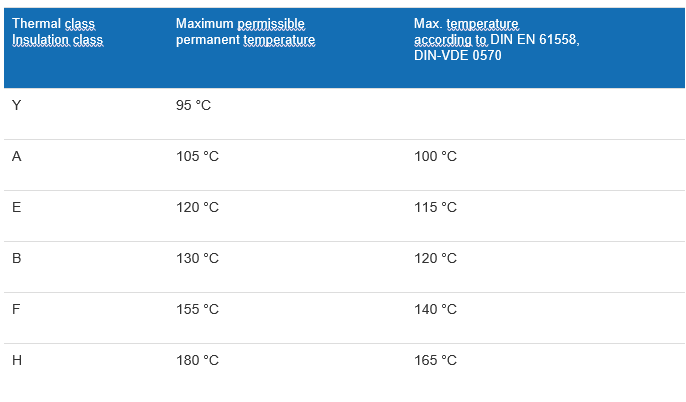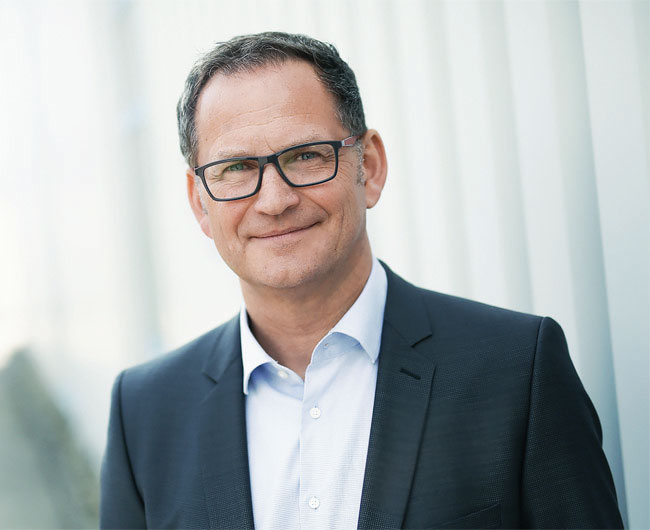Classification of insulation materials and limiting temperatures
Insulation material classes are generally used to characterize and specify insulating materials regarding their thermal resistance. Thus the insulation material classes provide a clear, standardized classification of the respective materials according to their maximum operating temperature. Consequently, different classes with varying limit temperatures have been defined. In order to ensure long-term functionality in operation, these limit values must not be exceeded. In addition to the melting or decomposition temperatures of the insulating materials, these limit temperatures also reflect the long-term effects of continuously extreme thermal conditions and therefore ensure permanent long-term reliability. In Europe, the insulation material classes are defined in accordance with the DIN EN 60085 classification as follows:

Overtemperature = max. temperature according to DIN EN 61558, DIN-VDE 0570 – ta
All temperatures exceeding 180° are traditionally classified in insulating material class C. Considering the materials represented here, such as mica, porcelain, glass, or quartz, however, this is not significant with regard to the GREMCO product range. The common insulating materials of the other insulating material classes comprise, among others, insulating resins and insulating varnishes, slot insulations, insulation tubing, or motor terminal boards.
Insulating materials and insulation material classes in the application context
An important area of application for insulation materials is in electrical engineering. For example, energy losses in electrical machines are converted into heat. Since excessively high temperatures may have a damaging effect on electrical equipment, insulating materials are used as protective elements. The maximum limit and winding temperatures of the respective device are generally indicated on the corresponding nameplate.
Insulation materials and insulation systems
The insulation material classes in turn refer both to individual electrical insulation materials (EIM) and to electrical insulation systems (EIS), which combine several materials elements. Accordingly, an insulating system does not necessarily rank in the same insulating material class as all the materials it contains. For example, an insulating system might qualify for a higher class than the encapsulated materials due to the protective effect of an encapsulating material such as cast resin.
Categorization of insulation material classes
Generally, insulating material classes should preferably be regarded as comparative values rather than as classical material properties. In principle, the properties of an insulating material deteriorate with increasing temperature, for example, due to the material reaching its softening temperature. Likewise, insulation materials exhibit accelerated aging phenomena under adverse thermal conditions, as a result of which their properties deteriorate. The specific aging rate can be determined by means of the Arrhenius equation. Consequently, the categorization of a material or system depends primarily on
- the requirements of the insulation material
- and the expected service life of the product.
Correspondingly, the same material or system can be assigned to different insulation material classes in different applications. The classification results from existing operating experience and comparative tests with proven insulating materials. The exact requirements and operating temperatures are specified in the respective product standards. For example, an average winding temperature of 120 °C is permissible for a dry-type transformer of insulation class 155 (F) in rated operation. The temperature at the hottest point of the winding may be a maximum of 145 °C in rated operation, with maximum short-term extreme values of up to 180 °C. Classes F and H are common in electric motors for industrial use. Thermal switches, thermal fuses, and motor protection switches of a motor or transformer prevent the limit temperatures from being exceeded.
We would be pleased to advise you on our product range and the possible applications of the Fitcoflex woven hose polyethylene. Please contact us!



